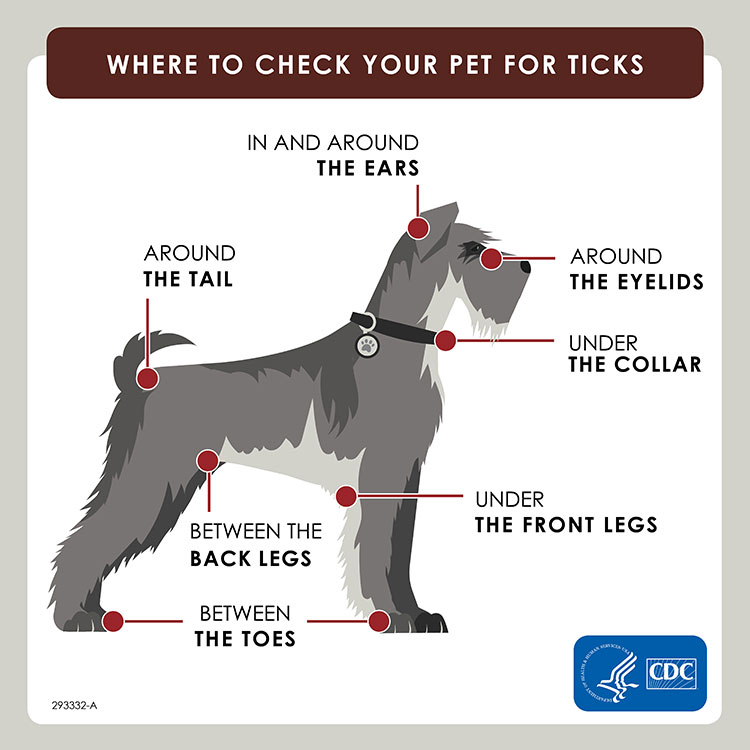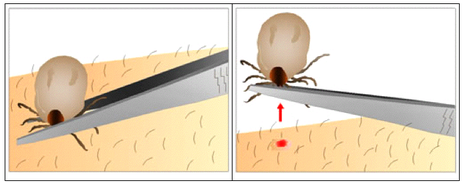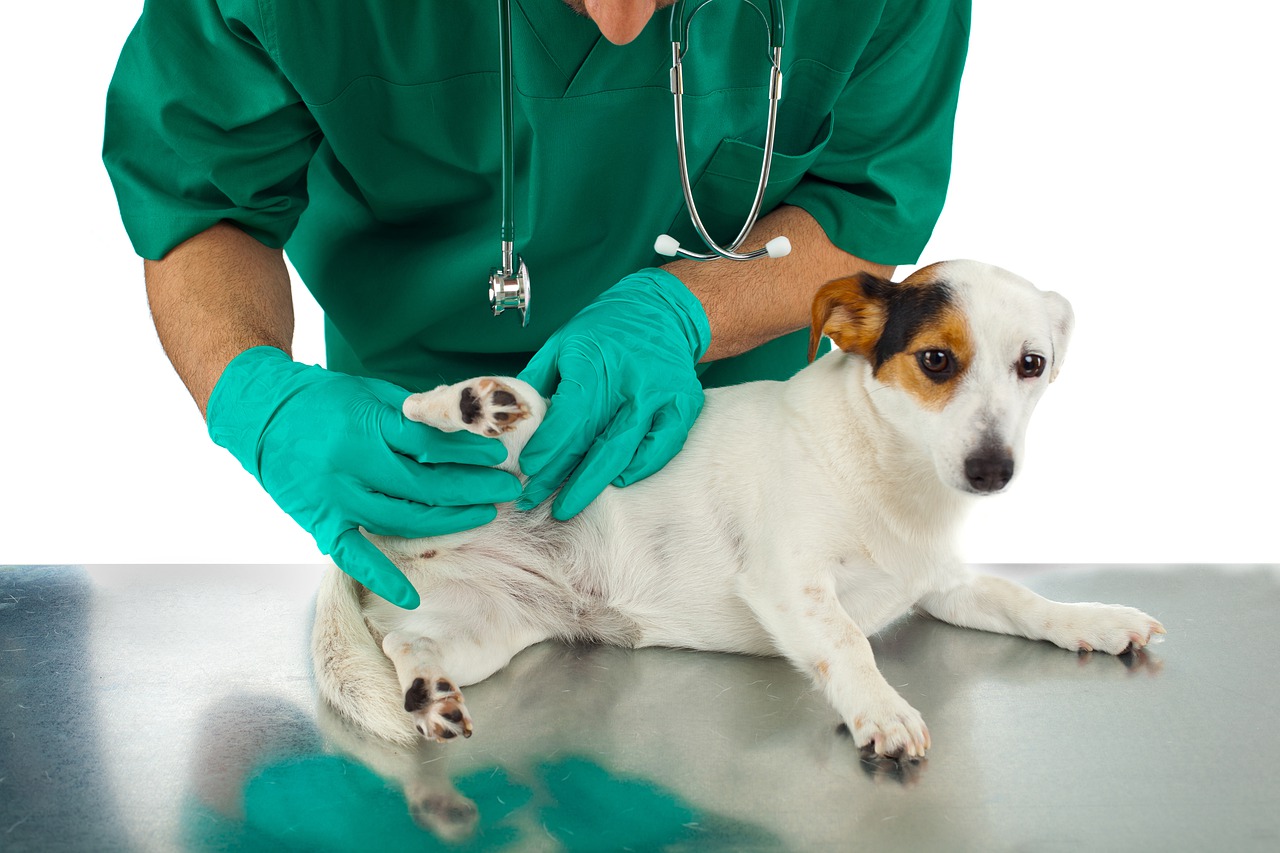If you have been a dog parent for a while now, you have probably had to deal with a tick embedded in your dog’s skin. This is particularly a common occurrence for dogs that play in wooden areas.
Apart from being creepy, ticks carry diseases.
The good news is that most tick-borne diseases take time to transmit. If you get rid of them before 36 hours, your dog will be safe.
But what is the safest way to remove ticks from dogs?
Using rubbing alcohol, of course! It is a tried and tested method that is not only effective but completely safe as well.
Here’s a detailed guide to help you remove a tick from a dog using alcohol.
Locating the Tick
Start by looking for circular, dark bumps on your dog’s skin.
Next, run your fingers slowly over the dog’s entire body. If you feel small bumps or swollen areas, check to see if there’s a tick burrowed in there.
Begin your search from your dog’s back and move down to his chest and belly.
Remember to check other areas such as his legs, chin, under the ears, armpits, tail, on the crown of the head, and between the toes and pads of his feet.

Image Source: CDC
If your dog is long-haired or double-coated and you find it a bit daunting to go through his hair with your hands, you can use a fine-toothed comb to search for the ticks.
Alternatively, use a dog hair dryer or a normal blow dryer to blow his coat around. This will allow you to spot any kind of tick that may be lurking on your dog’s skin or coat.
Remember to set the dryer on cool (to avoid burning your pooch) and keep in mind that some dogs may be afraid of hairdryers.
Sometimes, your dog may ‘show’ you that a tick is disturbing his peace. So, watch him to see if he is biting or scratching himself repeatedly in one place.
Related Post: 10 Best High-Velocity Dog Dryers
Removing the Tick
What You Will Need
- Tweezers
Pointy tweezers are recommended. Avoid square-off ones as these might tear the ticks. If you don’t have tweezers, grab any available tick remover tool.
Check this post for the best tools: 12 Best Tick Removal Tools for Dogs
- Latex gloves
Procedure
Once you have gathered the tools, follow the following steps to safely remove the tick from your dog
Step 1
Put on the gloves and gently dab the tick and surrounding areas with the alcohol. This cleans and disinfects the area.
Although wearing gloves is not mandatory, it will reduce your risk of contracting tick-borne diseases, especially if there are open cracks or cuts on your hands.
Step 2
Grab your tweezers or tick removal tool and use it to pull the tick out of your dog’s skin.
To optimize the results, place the tweezers as close to the dog’s skin as possible without catching any skin (see the image below).
Pull it out slowly without squeezing. If you go too fast, you run the risk of leaving the tick’s head attached to your pooch’s skin—this can cause septic abscesses and other types of blood infections.
Squeezing, on the other hand, may crush the tick and release its fluid on your dog, increasing the chances of infection.

Step 3
After successfully removing the tick, the next step is to properly dispose of the tick so it doesn’t make a comeback.
Don’t throw the tick in your sink or trashcan as it can easily crawl back.
Flushing it down the toilet will also get the job done but it won’t actually kill it.
The best way is to drown the tick in a jar of rubbing alcohol or spray it with a tick or flea spray.
If you want to be extra cautious, send the tick for testing. This will help you know if it carried any disease that might have been passed to your Fido.
Simply place the extracted tick in a sealed container and throw a blade of grass in there to ensure it survives.
Then go ahead and send it to your agency or vet for testing.
Step 4
Lastly, clean the area again with the alcohol and apply an antibacterial ointment. Most vets use povidine iodine solution or chlorhexidine.
Remember that the ointments are often diluted with water to reduce their concentration a bit.
Consult your vet for more professional advice on how to use a particular ointment that you purchase.
You can also check the ointment labels for specific dilution instructions.
Over the next few days, keep an eye on the hole left behind for any infection.
If the area remains irritated, infected or your dog shows symptoms of tick-borne diseases, make an appointment with your local vet.
Common symptoms of tick-borne diseases include swollen joints, arthritis, loss of appetite, fever, fatigue, temporary lameness (may last 3-4 days), swollen lymph nodes, and neurological problems among others.
Additional Tips
The minute you see a tick on your dog’s skin, your first instinct will be to pull it out using your fingers. Resist the temptation at all costs.
Doing this will likely squish or crush the tick, an action that might cause the release of bodily fluids from the tick to your dog and ultimately make your dog sick.
More often than not, the tick’s mouth will remain embedded in your dog’s skin no matter how thorough the retrieval method is.
Sometimes the tick just burrows deep inside the skin.
If it happens to you, don’t panic. Just leave the thing in there. It will fall off after a few days.
Plus, it won’t do further damage because the tick will be dead by then.
Consult your vet if you notice significant inflammation in the area.
The process of removing ticks isn’t fun for most dogs. So, before you begin, ensure that your dog is calm and in a good mood.
If possible, give him his favorite chew toy to calm him down and remember to shower him with praises in the process.
Finally, avoid applying things like repellents, Vaseline, or nail polish on the tick in a bid to kill it. This has been known to make the tick vomit on the dog thereby increasing the chances of infections.
Closing Thoughts
Tick infestation in dogs is a sad reality during pet ownership.
Even if the sight of a tick digging into your dog’s skin doesn’t make you cringe, get rid of it for the sake of your dog’s health.
All you need is rubbing alcohol, a tick removal tool, gloves, and a gentle hand.
Other Tick Control Guides
Curious about other tick control measures and tools? Feel free to check other our comprehensive guides to help you deal with these pesky critters:
How to Remove a Tick from a Dog with Vaseline
How To Get A Tick Off A Dog With Dish Soap
Can Hand Sanitizer Kill Ticks on Dogs?
5 Best Tick Sprays for Yard (Safe for Pets)
10 Best Tick Shampoo for Dogs
Image sources: dogheirs, CDC
As an Amazon Associate, we may receive a small commission from qualifying purchases but at no extra cost to you. Learn more. Amazon and the Amazon logo are trademarks of Amazon.com, Inc, or its affiliates.

